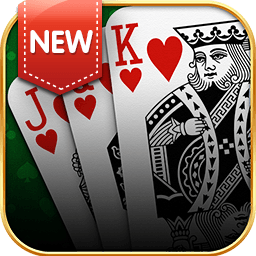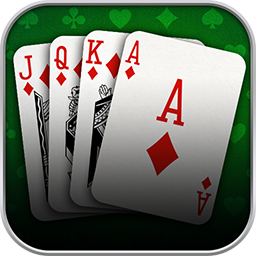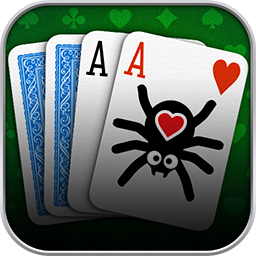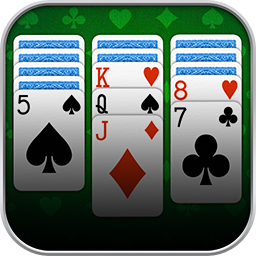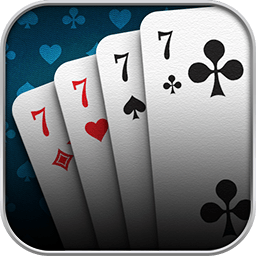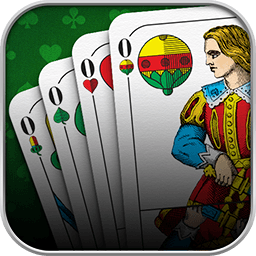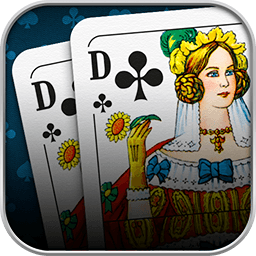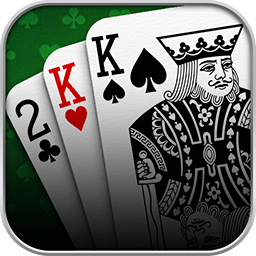At the Canasta Palace, you can play in real-time with fellow card game enthusiasts from all over the world. Now, let us take a look at how to play Canasta! We offer tables for two and four players. Our classic Canasta rules are based on the official Canasta rules of the New York Regency Whist Club. Since a game of Canasta can take a while, we allow setting a limit to the number of rounds. Our basic Canasta game rules are perfectly adjusted for novices and make for an easy start. Once you gained some experience, you can arrange custom rules to construct the game in the way you enjoy most. Go easy or go for a challenge!
In addition to this thorough explainer of how to play Canasta, you can find quick explanations for all terms around playing Canasta in our glossary. And we prepared deeper looks into specific aspects of the game in our Canasta lessons. Try out which source works best for you.
How Many People Can Play Canasta?
In classic Canasta, four players play in two teams of two, but it can also be played with two players, competing against one another. Other less common variations exist, but at Canasta Palace, we offer two player and four player Canasta.
The general game rules for 4 player Canasta and 2 player Canasta are more or less the same. The main difference is that in 2 player Canasta, you are playing alone, head to head, while in a game of four, you are not playing alone but in teams of two. In each case, there are two opposing parties.
The Canasta Playing Field
2-Player Canasta
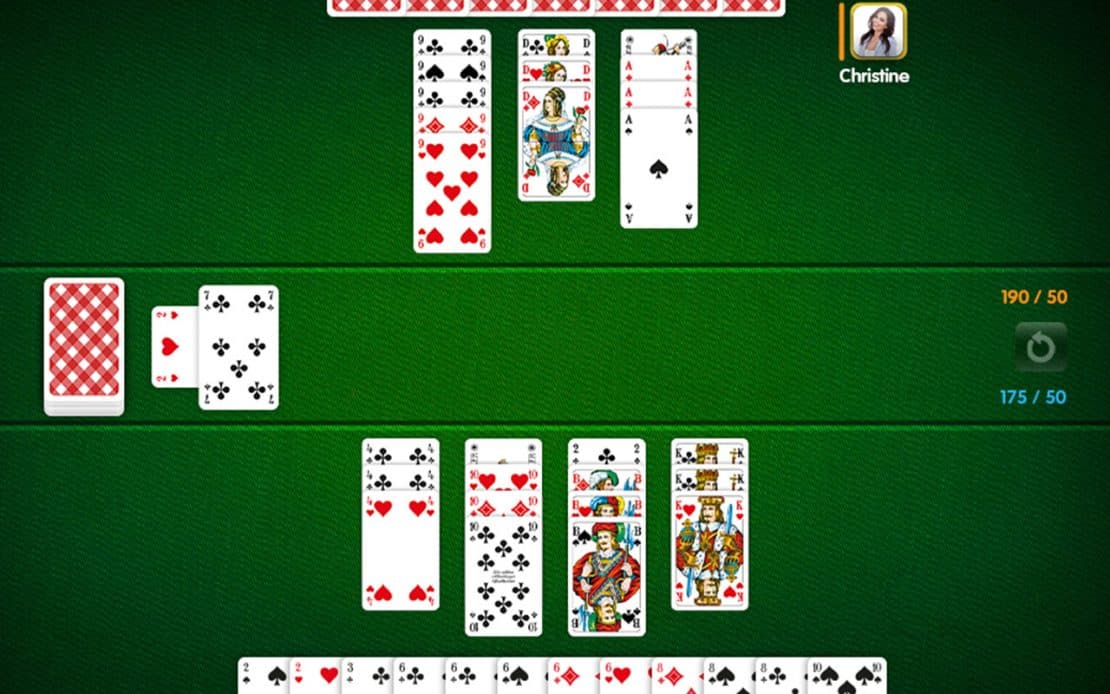
In two-player Canasta, the playing field is divided in the middle. The center area, separated by lines, holds the stock, discard pile, and score display for both players. There is also the undo button. The opponent has an orange marker, and their points are displayed in orange as well. Your points are shown in blue.
The Canasta rules for 2 players are the same as for 4 players, apart from a few details. We are looking at the different setups first.
4-Player Canasta
In four-player Canasta, the playing field is divided in the middle as well. Your team’s melding area is on the left in our desktop Canasta. Accordingly, your opponents’ melding area is on the right. In our mobile Canasta app, your team has the lower melding area, the opposing team the upper one.
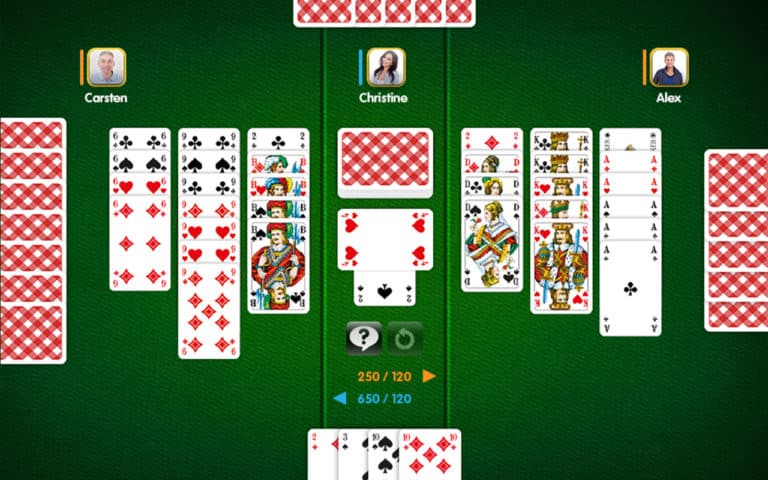
The center area, separated by lines, holds the stock, discard pile, and score display for both players. There are also two buttons – the undo button and the permission button. The opponents have orange markers. Their points are displayed in orange as well. Your team’s points are shown in blue.
The Aim
In Canasta, you try to collect more points than your opponents over the course of several rounds. A round of Canasta ends when a player has no more cards in their hand. This is called going out and it is achieved by cleverly collecting and combining cards to form sets and melding them. Melding and going out are the main ways you can collect points.
To be allowed to go out of a round, you or your team must have melded at least one set of seven cards – a canasta. A table of Canasta is played over several rounds. You can set a maximum number of rounds when creating tables at the Canasta Palace. Any table of Canasta ends when one team hits 5,000 points, even if the maximum number of rounds is not reached yet. If both teams reach this threshold in the same round, the one with the higher score wins.
Canasta Cards
How Many Cards Are Used in Canasta?
Most of the time, Canasta is played with two decks of French playing cards (52 cards each) and four Jokers. That makes 108 cards in total. There are eight cards of each rank, for example, eight Kings, eight Threes, etc. They all appear in the four suits of Clubs, Spades, Hearts, and Diamonds.
How Many Cards Are Dealt in Canasta?
The cards are dealt at the beginning of the game. How many cards are dealt in Canasta varies depending on the number of players: In two player Canasta, each player receives 15 cards; in four player Canasta, 11 cards. The leftover cards become the stock pile. One card is revealed from the stock pile and is now the base of the discard pile. If a wild card or a bonus card appears here, another card is drawn and discarded until this is not the case anymore.
Canasta Cards and Their Values
One of the things that makes Canasta a bit more complicated is the different values of cards, as the value doesn’t correspond to the pip value. Below, we cover the values of each of the Canasta cards.

Natural Cards
These are Aces, Kings, Queens, Jacks, and the pip cards from Ten down to Four. They are only used in melds and are grouped into lower-value cards (Four to Seven) and higher-value cards (Eight to King and Ace).
In Canasta, the pip values on the cards do not correspond with the card scores. The table below shows how many points each natural card is worth in Canasta:
| Card | Value |
|---|---|
| Ace | 20 points |
| Eight, Nine, Ten, Jack, Queen, King | 10 points |
| Four, Five, Six, Seven | 5 points |

Red Threes – Bonus Cards
Bonus cards have no function beyond yielding bonus points. In Canasta, these are the red Threes. When you receive a red three by dealing or drawing, it is automatically placed face-up in the playing field. You receive a supplement card. Red Threes score 100 bonus points. These points cannot be used for your first meld. If you or your team collects all red threes of a round, you gain 400 additional bonus points. But if your team couldn’t play any melds by the end of the round, all points for red Threes are turned into negative points.
While dealing the cards and setting up the playing field, a red Three can end up in the discard pile. In that case, the next card is drawn from the stock and placed on top of the red Three until a natural card or a block card is on top. A red Three in the discard pile remains visible since it is placed there rotated by 90°. If you pick up the discard pile with a red Three, the bonus card is automatically placed in your melding area and will not be replaced in your hand. Read our lesson about Red Threes to learn more.
A red Three is worth 100 points.
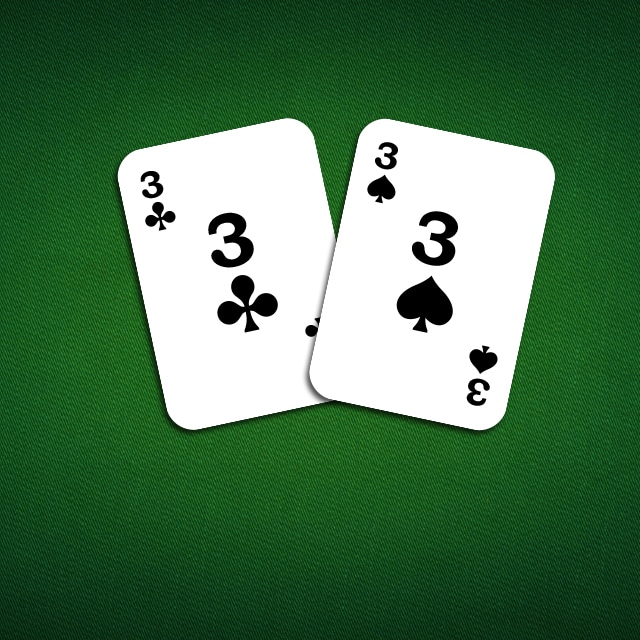
Black Threes – Block Cards
The black Threes are block cards. When a black Three is on top of the discard pile, it is blocked, and the next player can only draw from the stock. They cannot draw from the discard pile, add a single card from there to their melds, or pick up the whole discard pile. You can only add a Black Three to melds on the turn where you go out.
While a Black Three is only worth five points, it can have significant strategic value. Whoever picks up a tall discard pile has a great chance of winning the game. So if you think your opponent is about to pick up the discard pile, you can use a Black Three to block the discard pile and scupper their gameplan.
A black Three is worth 50 points.
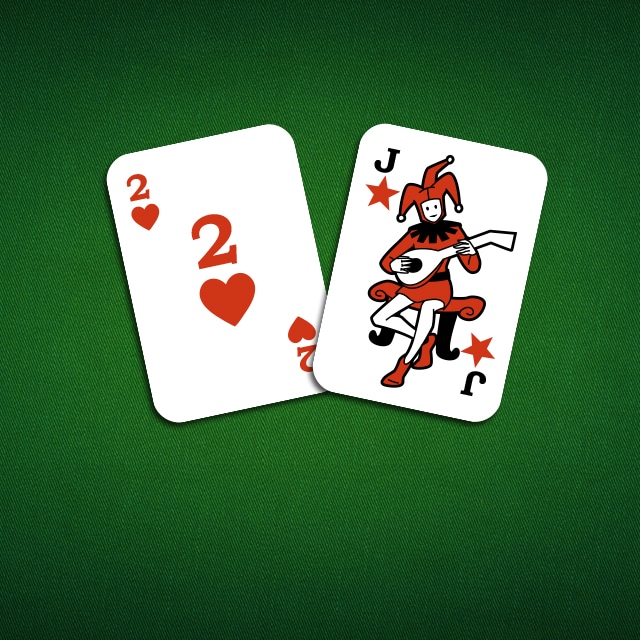
Jokers and Twos – Wild Cards
In Canasta, the four regular Jokers and all Twos are wild cards. They help with forming melds since wild cards can replace other cards of any rank in melds. Two Kings could form a correct meld with a Joker, for example. Discarded wild cards freeze the discard pile: As long as a wild card is in the discard pile, you can only pick it up by using the top for a meld with at least two natural cards from your hand. In addition, the discard pile is blocked as long as the wild card lies on top.
In Canasta, Jokers are worth 50 points, and Twos are worth 20 points.
In Canasta, the pip values on the cards do not correspond with the card scores. Learn the score and type of each card from this image:
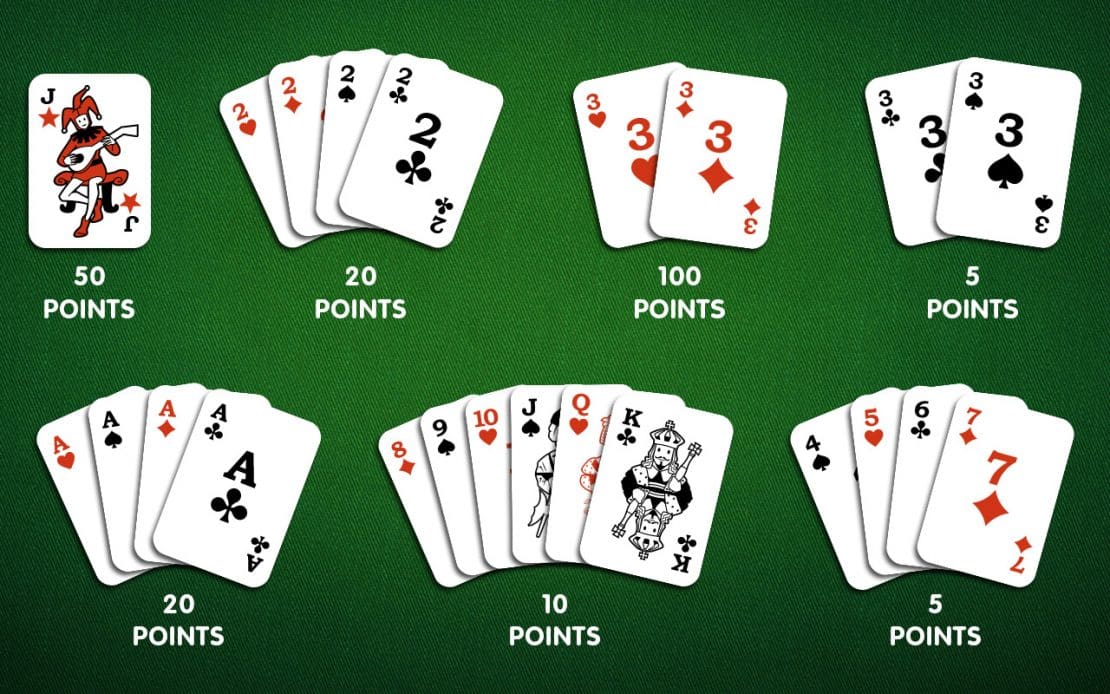
Melds in Canasta
Similar to in Rummy or Gin Rummy, to win a game of Canasta, you have to organise your cards into valid combinations, or melds, that meet specific criteria. In Canasta, a meld must meet the following criteria:
- A meld must consist of at least three cards of the same rank.
- The same card can be repeated within a meld (2x Ace of Hearts, for example).
- There is no limit to the number of cards in a meld.
- A maximum of three wild cards can be in a meld.
- Wild cards must not outnumber natural cards.
- Once melded, wild cards cannot be swapped or picked up again (in contrast to Rummy).
- You cannot add cards to your opponent’s melds.
- Black Threes can be melded only before going out.
Conditions for the First Meld
Each round, a party’s initial meld must score a minimum number of points. This minimum threshold depends on the party’s current total score and can be seen in the following table:
| Current Score | Minimum Score for First Meld |
|---|---|
| Below 0 | 15 |
| 0 to 1,495 | 50 |
| 1,500 to 2,995 | 90 |
| 3,000 and above | 120 |
So, the required score for a round’s first meld increases during the game. The minimum score is set separately for each party. This brings some balance by enabling the trailing team to enter the game a bit earlier. You can use the top card from the discard pile to compile your first meld. But you get to use the other cards from the discard pile only after forming the first meld with the single drawn card and your hand cards.
We will talk more about picking up the discard pile in a bit.
How to Play Canasta
After dealing the cards, one randomly appointed player starts with their turn. If you are playing Canasta offline, this is the player to the dealer’s left. Now, all players get to each play their turns in clockwise order until one player empties their hand.
Course of Action During a Turn
- The player can either draw a card from the stock or, if conditions are met, pick up the whole discard pile.
- The player can now play new melds or add cards to their party’s existing melds. If the player’s team has no melds yet, a minimum score must be reached with the initial meld.
- When the player is done with all actions, they must discard a card from their hand, and it’s the next player’s turn. The discard pile can be blocked or frozen for the following players by discarding a block card or a wild card. If a player goes out, they may skip this step.
Picking up the Discard Pile
The fight for the discard pile is one of Canasta’s key elements. Players can strategically prevent opponents from picking up the discard pile. The taller the pile is, the more suspenseful the fight. If you get to pick up the pile, you can feel victorious: You gained many cards and, potentially, complete canastas. The opportunity to pick up a tall discard pile can decide the game. Picking up the discard pile is also called buying.
These are some of the most important rules for picking up the discard pile in Canasta:
- You can pick up the discard pile only after your party completed the first meld or if you can use the top card of the discard pile for playing a legitimate first meld with two natural hand cards.
- When buying the discard pile, you must immediately play its top card, either by melding it with fitting hand cards or by adding it to an existing meld.
- If the top card of the discard pile is a black Three or a wild card, you cannot pick up the discard pile. It is blocked.
- If the pile contains a wild card (Joker or Two), it is frozen. It can only be thawed and picked up by using its top card with two natural hand cards to play a meld.
It is wise to consider carefully which card you are going to discard. You do not want to gift perfect opportunities to pick up the whole discard pile to your opponent. You should keep an eye on the course of the game and discard cards your opponent will not find very useful. The best choice is a black Three. If you run out of such cards, you might have to sacrifice a Two or a Joker.
Going out – Ending a Round of Canasta
Ending the round is called going out in Canasta. That is done by playing all your hand cards. You do not have to discard the last one, but you can.
In a game of four, you can ask your teammate for permission to end the round. Their answer is binding. If granted, you can meld and append your last cards, and optionally discard one.
There is a special case where a player is going out concealed: To achieve this, you must go out within one turn, and your party cannot have any melds before that. In other words, you play your first meld and go out in a single turn.
A round also ends when there are no more cards in the draw pile. In that case, points are counted with neither party going out.
How Many Canastas Are Required To Go Out?
You only need to have melded one canasta by the end of your final turn to go out. We also offer the custom rule Tough End, in which going out requires either two canastas or one natural canasta.
Scoring in Canasta – Counting Points
At first glance, Canasta scoring can look quite daunting. And it’s true to say calculating points in Canasta isn’t quite as simple as in, for example, Rummy or Gin Rummy. But not to worry – when you play Canasta online at the Canasta Palace, all the scoring is automatically handled for you.
That said, it’s still good to know how scoring works in Canasta, to help you keep track of the eventual value of your hand during the game. So here goes!
Once a round ends, the scores are determined as follows:
| Played melds | Sum of the cards‘ scores |
| Hand cards | Sum of the cards‘ scores as negative points |
| Going out | 100 points |
| Going out concealed | 100 points in addition to those for going out |
| Natural canastas | 500 points each |
| Mixed canastas | 300 points each |
| Red Threes | 100 points each. If a party has all red Threes, they gain 400 additional bonus points. If no melds were played, all points for red Threes are turned into negative points. |
The End of a Table
At the Canasta Palace, a table can end either by playing the selected maximum number of rounds or when one party reaches 5,000 points. The team with the highest total score wins the table.
Adjust Gameplay to Your Taste With Custom Canasta Rules
You can mix and match custom rules to set up and play Canasta online the way you like it best. Next, we’ll explain how you can apply the custom rules. After that, you get detailed explanations of these custom Canasta rules.
How to Play With Custom Canasta Rules
Using the Create Table button in our game, you can select which custom rules are in place at your table if you have a Premium membership.
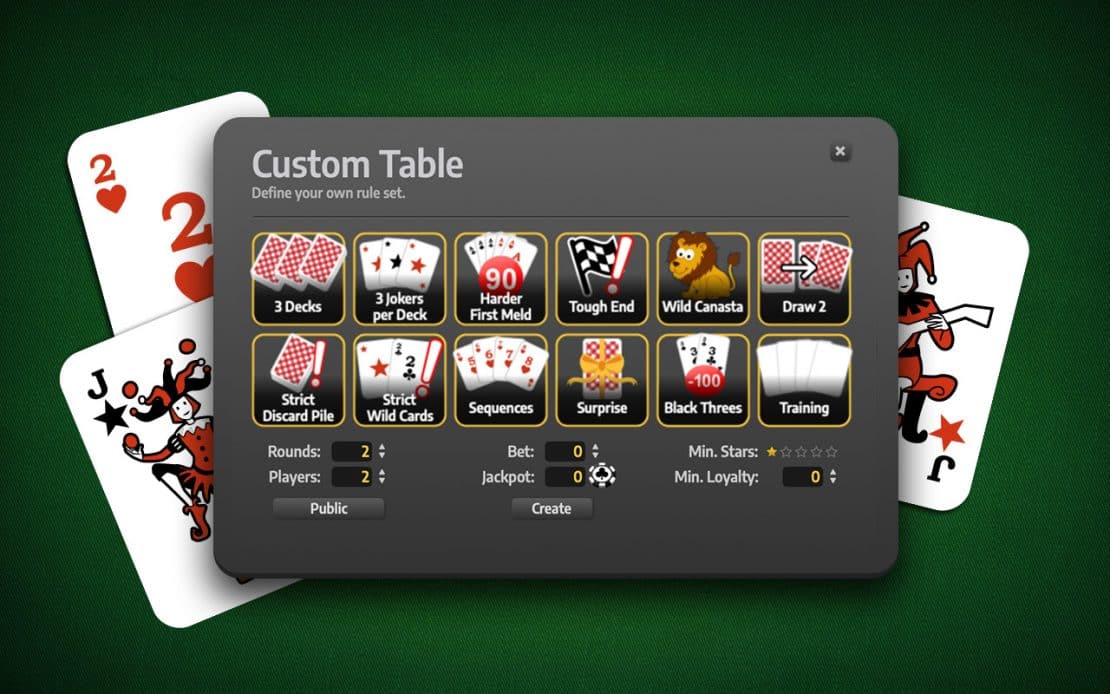
Naturally, you can play at tables with custom rules anytime without having a Premium membership simply by joining them. You can tell if a table at the Palace comes with custom rules by checking for the fan of red cards or a sequence of 3 Hearts cards in the table list. Via the card fan, you can see the table’s specifics, including a display of active custom rules.
Now, let’s go over which custom rules are available at the Canasta Palace!
Canasta Variations With More Cards
Our basic Canasta Rules use 108 cards: two decks of French-suited playing cards and four additional Jokers. With two players, each player receives 15 cards at the beginning of a round. With four players, it’s 11 cards each. However, some Canasta variations rely on adaptations to the number of cards used in the game.
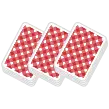
3 Decks
This custom rule adds one more deck to the game. That means another 52 cards and two more Jokers, adding up to 162 total cards. The number of hand cards is not affected by this rule.
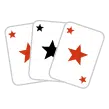
3 Jokers per Deck
Play with one more Joker per deck. In a standard game of Canasta, that means six Jokers in total; in a game with 3 Decks, even nine Jokers. As a result, the game now has more wild cards to support your canastas or to freeze the discard pile.
Up The Canasta Challenge
Experienced Canasta players may long for more challenging gameplay. That’s why we offer the following custom rules, enabling Canasta variations that are a bit tougher and stricter, making different elements of the game a bit harder.
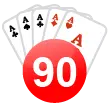
Harder First Meld
In Canasta, your initial meld in each round must reach a minimum value. That minimum value depends on your current total score at the table. Employing the custom rule Harder First Meld, the minimum values are increased.
| Current Score | Minimum Value for Standard First Meld | Minimum Value for Harder First Meld |
| Below 0 | 15 | 50 |
| 0 to 1,495 | 50 | 90 |
| 1,500 to 2,995 | 90 | 120 |
| 3,000 and above | 120 | 150 |
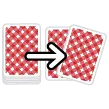
Draw 2
With this rule, you draw two cards from the face-down stock at the beginning of your turn. Usually, it would be only one card per turn.
This isn’t necessarily a stricter rule, as it spreads more cards to everyone, opening up more chances to form valid melds. Since you will always be drawing two cards, but still only discarding one card each time, this rule can make it more difficult to go out.
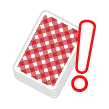
Strict Discard Pile
In standard Canasta, discarded wild cards freeze the discard pile. But with this rule, the frozen state becomes permanent. That means you can only pick up the discard pile by directly melding its top card with at least two natural cards from your hand. This means that you are not allowed to add just the top card alone to a meld.
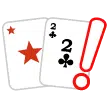
Strict Wild Cards
Normally, as long as wild cards don’t outnumber natural cards, a maximum of three wild cards can be in a meld.
But with Strict Wild Cards, this maximum number per meld is reduced to two instead. Additionally, apart from the first meld, any meld must consist of at least five natural cards before you are allowed to add any wild cards. And finally, wild cards cannot be added to a canasta anymore.

Black Threes
Any black Threes that are still in your hand by the round’s end deal a penalty of -100 points instead of the standard -5. That way, it becomes much riskier to collect black Threes for your final meld or to pick them up with the discard pile.

Tough End
Following the basic Canasta Rules, you could go out once your party melded at least one canasta at the end of your final turn before going out. But with this custom rule, you need to have melded either two canastas or one natural canasta.
If you are also using the custom rule Wild Canasta, only the party going out receives a bonus for their complete wild canasta. If the other party goes out, the points for your completed wild canasta simply expire.
When combining Tough End with the custom rule Sequences, going out requires any two canastas, natural or not.
Adding Game Elements
Some Canasta Variations come with extra game elements, such as new types of melds or extra cards to pick up under certain conditions. Here are your options at the Canasta Palace.

Wild Canasta
A new type of meld is introduced to the game: the wild canasta. You are allowed to create a single meld of only wild cards per round. During the round, you are allowed to add to this meld until it reaches a maximum of seven cards.
At the Canasta Palace, these canastas come in two subtypes:
- the big wild canasta, which has more Jokers than Twos, yielding 2,000 bonus points;
- and the small wild canasta, which has more Twos than Jokers, yielding 1,000 bonus points.
This high reward comes with a high risk if you don’t have seven wild cards to meld at once: any incomplete wild meld deals a penalty of -1,000 points at the end of the round.
If the custom rule Tough End is used as well, you will only get the bonus for your complete wild canasta if your party is the one to go out. If the other party goes out, the points for your completed wild canasta expire.
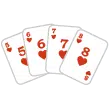
Sequences
In addition to the usual card sets of the same rank, melding sequences is now allowed, too. Sequences consist of at least three and at most seven natural cards of the same suit with consecutive ranks. A complete sequence with seven cards is called a sequence canasta. Melding multiple sequences of the same suit is possible. A completed sequence canasta scores 1,500 bonus points at the end of the round.
Furthermore, each player starts out with 15 hand cards each round, regardless of the player number. Going out concealed is no longer rewarded, but going out always adds 200 bonus points instead of the usual 100 bonus points.
If Tough End is activated, too, two canastas are needed to go out, whether natural or not.
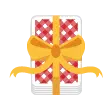
Surprise
At the beginning of the round, three additional cards are placed face-down under the discard pile. The first player picking up the discard pile then receives this little surprise of three secret cards.

Training
This table isn’t ranked for the league, but you still gain experience points at these tables.
Canasta Online – What’s the Difference?
While the rules remain the same, playing cards online is different from a game of cards at a real table in some irreplaceable aspects. Playing Canasta online frees you of a couple of inconvenient tasks. A substantial improvement is avoiding human error: Players can’t deal too few or too many cards. Melds can only be played if they conform to the Canasta rules. All of this is taken care of by programming. The computer also assists you with handling and managing the cards in your hand and the playing field.
Canasta’s Complex Set of Rules
We know, we know… After taking a first look at the rules of Canasta, their multitude and the number of exceptional cases can spoil the initial vim and vigor.
This is partly due to synonymous terms used in different sets of rules – natural canasta vs. real canasta, for example. To help you keep track of the Canasta rules, we drew up this glossary.
All the special cases can be learned step by step. The key elements of the game are quickly acquired, especially if you played Rummy before. Once you know the ropes, you might find some interesting insights in our Canasta Lessons. But hopefully after reading our explainer of the Canasta rules, you feel confident enough to play Canasta online.
Fancy More Card Games?
Here at the Palace of Cards, we don’t just run the Canasta Palace. We offer a variety of popular card games. You can play trick-taking games like Skat, Pinochle, Doppelkopf, and Schafkopf. Have a try at our solitaire card games, or patience card games, e.g., Klondike, Easthaven, Spider, and Scorpion, or go classic with Rummy or Mau-Mau. All games are free to play in their respective Palace.
